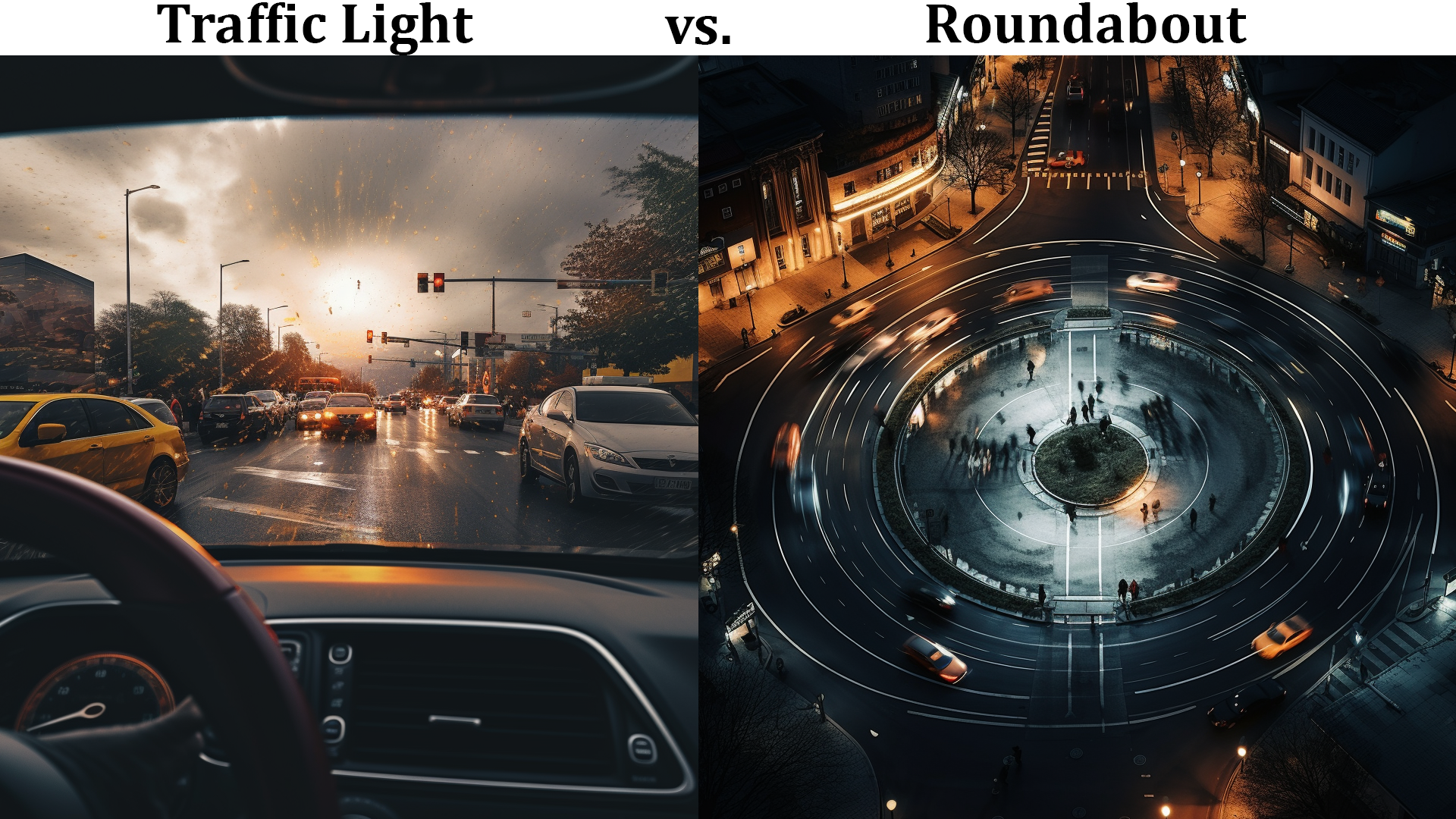Why Do Texans Hate Roundabouts?
August 1, 2023 | in Defensive Driving Tips
If there was a way to improve traffic, would you be interested? Would you still be interested if you had to learn a new skill for it to work?
There are certain topics where the research and data matter less than our feelings and the overall “vibe”. An example of this is something like the “zipper merge”. This is when a lane ends and drivers must allow the other driver to get over into their lane. The data tells us that for it to be most effective, drivers shouldn’t get over until the end of the lane. But for the people in the other lane already, they justifiably feel like the other person is cutting ahead of them. It feels bad, but it’s good for traffic.
Roundabouts are a similar topic. Even though the data by major driving safety organizations recognizes that they are safer than a traditional intersection, it’s something that cities in the US have been slow to adopt. If you told any Texan that there was a way to improve traffic in their city, almost everyone would agree that we should do something about that. If that same solution could also lower the rates of crashes and especially fatal crashes, you would think it’s something everyone would be on board for. But if the solution is something unfamiliar, that enthusiasm fades fast. If roundabouts could provide that big of an improvement, why don’t we have more of them?

There’s an old saying that goes, “better the devil you know than the devil you don’t.” This is part of the issue with modern roundabouts. Even if everyone agrees that it’s statistically proven to be safer than traffic lights, that doesn’t mean that people want them. Intersections are incredibly dangerous, but we’re familiar with them. We’ve grown up driving on roads where they’re the norm. Red and green. Stop and go. It feels like something we’ve always known.
It’s not just for heavy traffic though. If you have ever been on the road late at night or early in the morning, you’ve probably been stopped at a long red light while nobody was around. Maybe you patiently waited for the light to turn green. Maybe you waited a while before illegally running the light. A roundabout doesn’t require you to wait for a light. It’s the same with intersections controlled by stop-signs. Instead of the awkward interaction where two people stop at the same time, and then both try to go (the traffic on the right has the right of way, if you stop at the same time) – you would simply yield as you would normally.
Roundabouts aren’t a solution for everything, nothing is. The best we can do is try to do just a little bit better, every chance we can. Some traffic statistics to put it into context:
- The average American will spend over 40 hours per year waiting at red lights
- Roundabouts reduce fatal crashes by 90%
- Roundabouts reduce crashes that result in an injury by 75%
- Roundabouts improve traffic flow by 30-50%
- November 7th, 2000 was the last day there wasn’t a death on Texas roads





